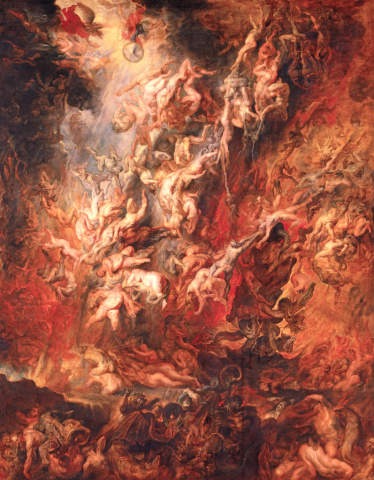The Cultural Costs of War: Recovering Charlemagne's Bones in 1945
- PJ Springer

- May 15, 2020
- 4 min read

The city of Aachen, Germany, is located between the Meuse and Rhine rivers, near the point where the Netherland, Germany, and Belgium share a border. As such, it was near the lines of the Western Front for all of World War I, and a site of heavy fighting in World War II, as Allied armies sought to complete the conquest of Nazi Germany. Of course, Aachen is a city with a heritage much older than the twentieth century—among its many claims to fame, it served as Charlemagne’s capital. Within the heart of Aachen stands the Aachen Cathedral, the oldest such edifice in northern Europe, and one of the original 12 UNESCO World Heritage Sites. Charlemagne was crowned the emperor of the Holy Roman Empire in the cathedral, and when he died in 814, his body was interred there. Thirty-one German kings sat on the throne built for Charlemagne (and still found in the cathedral to this day). In 1165, Emperor Frederick Barbarossa canonized Charlemagne, and in honor of the event, had his remains exhumed and reinterred in an ornate sarcophagus of gold and silver. Over the centuries, the cathedral’s treasury had amassed a fortune in artwork, precious metals, and other priceless artifacts.

By late summer 1944, Allied forces in the west were driving upon the German border, where a chain of fortifications (the Siegfried Line) stood ready to greet them. German Fuhrer Adolf Hitler issued a no-retreat, no-surrender policy, demanding that the German Army fight to the last man to stop an invasion of the German homeland. Aachen, sitting astride the main route of march into Germany, was clearly shaping up to be a major battlefield, with several crack German divisions heavily fortified within its streets and buildings. Allied artillery barrages and aerial bombardment did little to dislodge the German defenders. The attackers, comprised mostly of replacement troops fresh to the theater of operations, had little training for urban combat, and might have been forgiven if they had chosen to utilize their massive logistical advantages to simply pound the city flat with high explosives before moving in to mop up the remains. However, cultural conservation specialists had apprised the Allied high command of the significance of the Aachen Cathedral, and all that it contained. In turn, the military commanders sought to protect the cathedral from direct attacks. Although it still suffered damage from nearby explosions, the basic structure survived the fighting for Aachen in the fall of 1944.

Despite the survival of the cathedral, when the German defenders were finally driven out of the area by the end of October, the victorious Allies discovered that most of the precious items from the cathedral were nowhere to be found. It was possible that they had been destroyed, although members of the Museums, Fine Arts, and Archives organization hoped they had been removed, presumably to protect them from damage and prevent their capture. This special organization of volunteers, popularized in the book and film The Monuments Men, provided expert advice to Allied commanders regarding sites that should be avoided if possible, in the hope of preserving European cultural heritage as much as possible.

As the U.S. Fifteenth Army pushed across Germany, its troops were tasked with the capture of Siegen, a small town 100 miles east of Aachen. There, they made an astounding discovery in a cave complex being used as an air raid shelter. The treasures of the Aachen Cathedral had been evacuated prior to the bitter street fighting in October, and were safely held. In addition to the works of priceless art, the relics and artifacts associated with Charlemagne were stored there. To the surprise of the discoverers, Charlemagne’s bones were part of the evacuated treasure, still contained within his golden sarcophagus. Not surprisingly, the American troops who overran the collection point found it impossible to resist touching the treasures they had found. Without the presence of basic museum safeguards, such behavior was almost inevitable. And, of course, they documented their own activity—which is why we have a photo of Private William Scollie of Chicago, a member of the 8th Infantry division, touching the Crown of the Kaisers, first used to coronate Charlemagne more than 11 centuries earlier.

Taking the festivities one step further, First Lieutenant Richard Swenson of Akron, Ohio, tried the crown on for size, while holding the ceremonial scepter and orb, and perching Charlemagne’s sword across his lap.

Among the many artifacts were one of Rembrandt’s last-known self-portraits, Peter Paul Ruben’s “The Descent into Hell of the Damned,” and a host of holy artifacts of gold, inset with precious stones. The value of the find was literally incalculable—and yet it represented only a small fraction of the cultural treasures put at risk during World War II. Over the next three decades, the Aachen Cathedral was restored and rebuilt, although some of the damages could never be repaired. It is now once again open to visitors, and has the relics discovered in Siemen back on display—protected from American tourists armed with cell-phone cameras, of course.
The disappearance and destruction of irreplaceable cultural artifacts is one of the aspects of war that is often forgotten in the rush to engage in conflict. But, at least during World War II, the Allies made a good-faith effort to save as much cultural heritage as possible, even in the midst of the deadliest and most destructive war in human history.







Thank you for preserving the cultural heritage